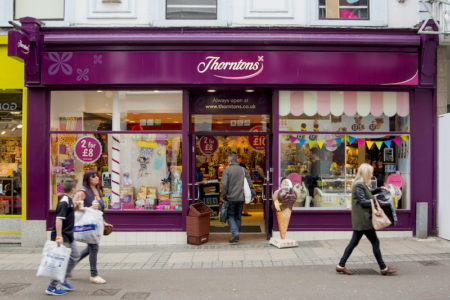Industry drive for healthier snacking investment comes amid spike in sales for indulgent confectionery

The Lindt Shop in the Lindt Home of Chocolate in Kilchberg Switzerland (Lindt & Sprüngli)
Among the most fascinating strategic industry moves of the past week has been Nestlé’s confirmed major investment into more healthier product ranges, including enhancing its confectionery portfolio to fit with producing better-for-you ranges across its entire product output.
This is undoubtedly a mammoth task for the world’s largest single food group, and is yet another strong signal that the industry is not just treating this development as a short-term passing trend, this is a fundamental shift in the way that people are thinking about their treating experiences.
It will be interesting to see what kinds of new products are consequently emerging from the business that respond to this apparent desire for a greater range of options – and part of this picture will be discussed at our World Confectionery Conference this week, on 5 October, as Nestlé’s John Newell takes the stage to discuss flavour development with cocoa products and how the company goes about devising some of its ranges.
While on the one hand, we see companies investing significantly in such strategies – including another of the world’s largest groups, Mondelez, in terms of its tech lab initiative to find sustainable snacking businesses of the future, and on the other, consumer preferences for products that are especially indulgent.
This considerable disconnect is definitely apparent from even the most casual flick through mainstream newspapers and online publications, where there seems a genuine indifference to seriously engage with the issue of obesity (around a third of children are clinically overweight by the time they leave primary school at the age of 11), with it routinely being described as being a crisis situation in the UK, costing our NHS health services billions a year in obesity-linked conditions within our adult population.
To that end, there are now High fat, salt and sugar (HFSS) regulations in place within the past year designed to curb levels of sugar, salt and calories in product ranges – yet perhaps unsurprisingly, the latest industry studies in the UK have found that such categories have experience 27% growth in the past year, with a corresponding increase of just 1% rises for health bars and other related better-for-you options. So where lies the truth? Well, it’s clear we all like the idea of being more healthy, but if we’re all brutally honest with ourselves, it’s those indulgent treats that everyone seems to clamour for the most. So squaring that circle between great taste and being good for you is something that remains an extremely challenging end point to arrive at.
For some, the answer lies in simply making indulgent treats smaller (this is already happening through the much-dreaded notion of shrinkflation – making. products smaller on the quiet, while charging the same for them), which has also now given way to the concept of super shrinkflation, where not only are customers getting less, they’re actually paying more for it – at least 20% more in some cases in the past year for confectionery in the UK at least, but the situation is calming down a little as headline inflation rates slowly begin to decrease.
So what is the answer? We shall just have to see whether the programmes of Nestlé and Mondelez can pull of the technical and taste triumphs that will be needed to win over consumer bases that are deeply attached to their favourite treats – however good or bad they may be for them. It’s certainly a question for debate, and is likely to crop up this week at our conference, so don’t be shy in raising your views either way on this. Here’s hoping to see you in Harrogate for our latest event – there’s still just enough time to register should you wish to be part of what we believe will be one of the key events of the year.
Neill Barston, editor, Confectionery Production
- Keep in touch at [email protected] or via social media: @confectionprod



